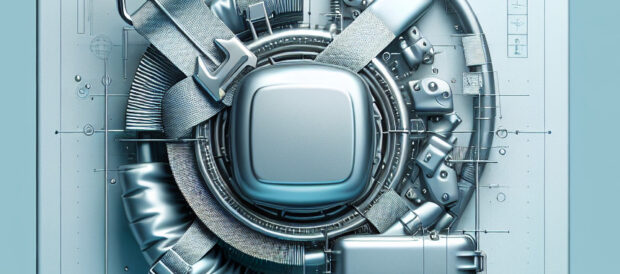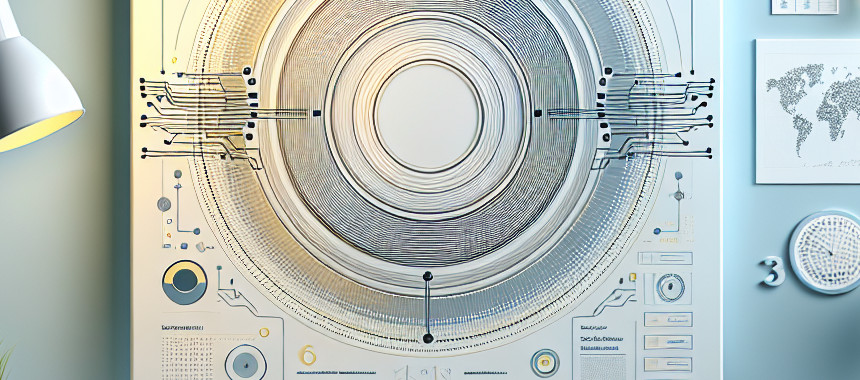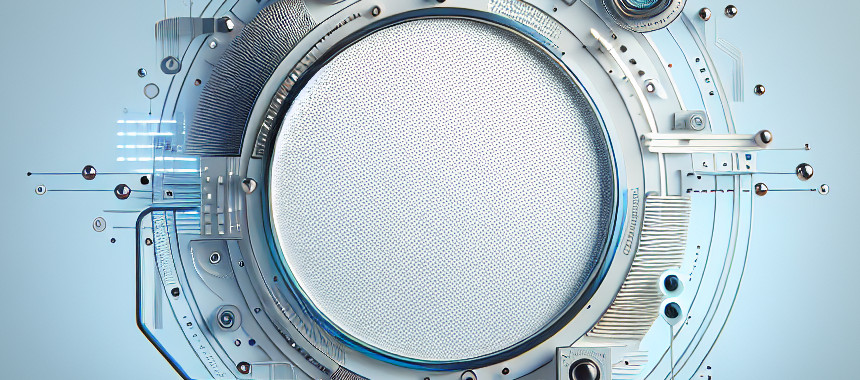
Sensor Fusion Report
: Analysis on the Market, Trends, and TechnologiesThe sensor fusion market sits at the center of autonomous systems and edge intelligence, with the internal trend data valuing the market at USD 7.6 billion in 2024 and projecting a rise to USD 28.2 billion by 2033 (15.7% CAGR), indicating strong commercial traction for multi-sensor stacks and AI-assisted fusion engines.
45 days ago, we last updated this report. Notice something that’s not right? Let’s fix it together.
Topic Dominance Index of Sensor Fusion
To gauge the influence of Sensor Fusion within the technological landscape, the Dominance Index analyzes trends from published articles, newly established companies, and global search activity
Key Activities and Applications
- Advanced driver assistance systems and vehicle safety: real-time fusion of radar, camera, LiDAR, ultrasonic and IMU streams supports AEB, LDW, BSD and adaptive cruise controls; regulation and NCAP requirements accelerate OEM adoption REPORT: Automotive Sensor Fusion Market Research Report By Sensor Type (Radar Sensors, Camera Sensors, Ultrasonic Sensors, LiDAR Sensors).
- Autonomous navigation and SLAM for robotics and drones: low-latency GNSS/INS + visual + LiDAR fusion provides resilient localization in GPS-denied or cluttered environments.
- Industrial automation and perception for pick/place, quality inspection and predictive maintenance: vision + force/torque + proximity fusion reduces false positives and improves cycle times in dynamic cells.
- Smart infrastructure and traffic monitoring: edge video fusion and sensor networks produce traffic metrics and safety alerts without streaming raw video offsite, important for privacy and bandwidth control Sensys Networks Top 10 Applications of Sensor Fusion Technology.
- Wearables and healthcare monitoring: IMU, PPG and environmental sensor fusion enables continuous digital biomarkers and fall detection used in clinical trials and remote care BioSensics.
Emergent Trends and Core Insights
- Edge AI becomes first-order: inference at sensor hubs reduces latency, preserves bandwidth and enables deterministic control loops; vendors package light neural models into sensor hubs and SoCs to meet automotive and industrial SLAs
> So what: companies that deliver validated, low-power inference pipelines will win production deals where cloud roundtrips are unacceptable. - Multi-modal low-level fusion (raw data alignment) is rising: patents and research emphasize temporally and spatially aligning raw sensor streams rather than fusing late decisions, improving small-object detection and occlusion handling Sensor Fusion in Autonomous Vehicle Market.
> So what: suppliers offering precise calibration and time-sync toolchains capture disproportionate engineering time and reduce system-integration risk. - MEMS and IMU consolidation: MEMS IMUs dominate compact fusion stacks for consumer, robotics and vehicle dead-reckoning; RTK/AI hybrids address IMU drift in urban canyons
> So what: MEMS leaders and companies that package INS+GNSS+AI correction software can address the high-value positioning segment. - Sensor redundancy and safety assurance (ASIL/SOTIF): demand for fail-operational fusion architectures and verification suites grows as OEMs target certification for higher automation levels LAKE FUSION Technologies GmbH.
> So what: test, simulation and verification services become strategic assets for suppliers targeting automotive Tier-1 integration. - Interoperability and standards gap: lack of common fusion APIs and benchmarks slows platform consolidation and raises M&A interest for middleware that abstracts sensors Sensor Fusion Market – Historic Data & Forecasts.
> So what: middleware players that offer vendor-agnostic adapters and validation suites have a defensible commercial path into multiple verticals.
Technologies and Methodologies
- Classical probabilistic filters and their variants: Kalman, Extended/Unscented Kalman and Particle filters remain core for state estimation in IMU/GNSS fusion and pose tracking Kalman Filter & Bayesian approaches.
- Learned deep fusion (feature and attention models): CNN and transformer models ingest multi-sensor tensors (image, point cloud, radar spectrograms) with cross-modal attention to improve detection under adverse conditions Attention-Based LiDAR–Camera Fusion for 3D Object Detection Sensor Fusion Market Outlook (2022 to 2032).
- Time synchronization and hardware co-design: IEEE 1588/PTP, hardware timestamping, and ASIC/FPGA fusion blocks reduce jitter and enable sub-millisecond alignment for low-latency control Sensor Fusion Market – By Algorithm & Technology.
- Edge compute accelerators and sensor hubs: low-power NPUs, FPGAs, and fused sensor SoCs perform on-device ML and reduce system power budgets for always-on applications Lattice 3D sensor fusion reference design; edge AI focus AI Enabled Sensor Fusion Kit Market Research Report 2025-2035.
- Validation, simulation and digital twin methods: synthetic sensor streams, high-fidelity LiDAR/radar models and scenario libraries accelerate safety validation and reduce road-test exposure Software-defined sensor suites and simulation partnerships Roots Analysis sensor fusion market summary.
Sensor Fusion Funding
A total of 246 Sensor Fusion companies have received funding.
Overall, Sensor Fusion companies have raised $7.9B.
Companies within the Sensor Fusion domain have secured capital from 1.0K funding rounds.
The chart shows the funding trendline of Sensor Fusion companies over the last 5 years
Sensor Fusion Companies
- Foresight Automotive — Foresight develops stereoscopic 3D perception and IP-protected algorithms for collision avoidance and ADAS, with emphasis on low false-alert rates in automotive environments. They focus on camera-only or camera-dominant stacks that reduce LiDAR dependency while retaining 3D perception in adverse lighting.
- Fixposition — Fixposition offers centimetre-class positioning by fusing GNSS, visual odometry and INS for autonomy in GPS-challenged environments (urban canyons, forests). Their product targets off-road autonomy, precision agriculture and AMR applications where satellite outages are common.
- VisionCraft — VisionCraft provides edge AI video sensors and mobile, battery-operable monitoring nodes that run on-device object detection and analytics. Their USP is a deployable, privacy-preserving edge stack for municipalities and retail that avoids continuous cloud streaming.
- Sensible Robotics — Sensible Robotics produces tactile skin sensors and the software to interpret touch for humanoid and collaborative robots. Their tactile fusion stack combines pressure, force and contact timing to enable safe human-robot interaction and richer manipulation data for learning systems.
Get detailed analytics and profiles on 709 companies driving change in Sensor Fusion, enabling you to make informed strategic decisions.
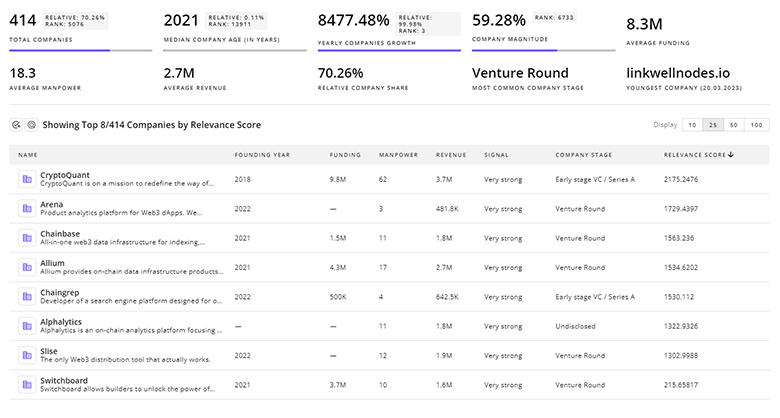
709 Sensor Fusion Companies
Discover Sensor Fusion Companies, their Funding, Manpower, Revenues, Stages, and much more
Sensor Fusion Investors
TrendFeedr’s Investors tool provides an extensive overview of 1.3K Sensor Fusion investors and their activities. By analyzing funding rounds and market trends, this tool equips you with the knowledge to make strategic investment decisions in the Sensor Fusion sector.

1.3K Sensor Fusion Investors
Discover Sensor Fusion Investors, Funding Rounds, Invested Amounts, and Funding Growth
Sensor Fusion News
Explore the evolution and current state of Sensor Fusion with TrendFeedr’s News feature. Access 2.7K Sensor Fusion articles that provide comprehensive insights into market trends and technological advancements.
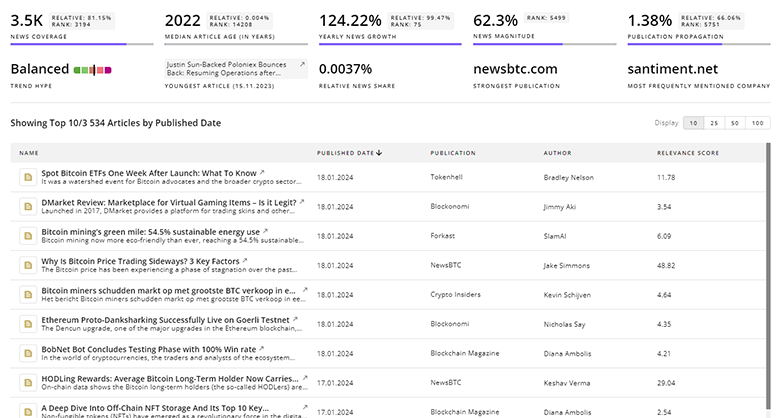
2.7K Sensor Fusion News Articles
Discover Latest Sensor Fusion Articles, News Magnitude, Publication Propagation, Yearly Growth, and Strongest Publications
Executive Summary
Sensor fusion now functions as the pragmatic enabler for autonomy, not merely an academic capability. The evidence indicates two simultaneous races: one to deliver validated, safety-qualified perception platforms for automotive and aerospace markets, and another to miniaturize and embed AI-centric fusion into edge devices for robotics, IoT and medical monitoring. Companies that provide time-synchronized, low-latency fusion pipelines (hardware plus verified software) and clear verification toolchains will capture the highest value. For incumbents and investors the near-term strategy matrix is clear: secure defensible IP in calibration/fail-operational blocks, deploy edge AI inference validated under representative environmental scenarios, and pursue middleware or standards roles to lower integration friction across the fragmented sensor ecosystem.
We're looking to collaborate with knowledgeable insiders to enhance our analysis of trends and tech. Join us!




